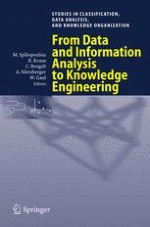2006 | Buch
From Data and Information Analysis to Knowledge Engineering
Proceedings of the 29th Annual Conference of the Gesellschaft für Klassifikation e.V. University of Magdeburg, March 9–11, 2005
herausgegeben von: Professor Dr. Myra Spiliopoulou, Professor Dr. Rudolf Kruse, Dr. Christian Borgelt, Jun.-Professor Dr. Andreas Nürnberger, Professor Dr. Wolfgang Gaul
Verlag: Springer Berlin Heidelberg
Buchreihe : Studies in Classification, Data Analysis, and Knowledge Organization
